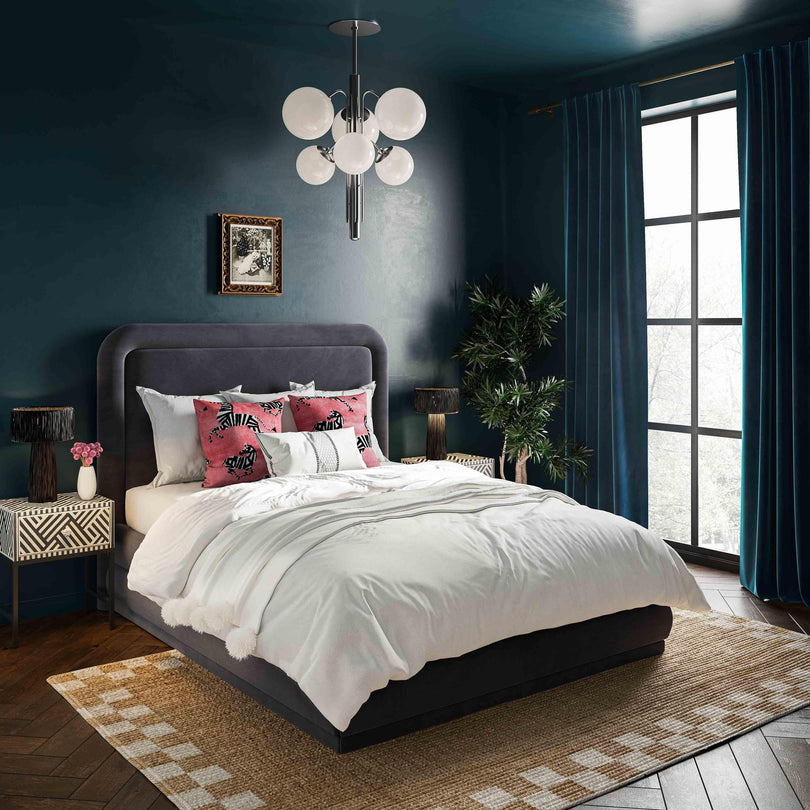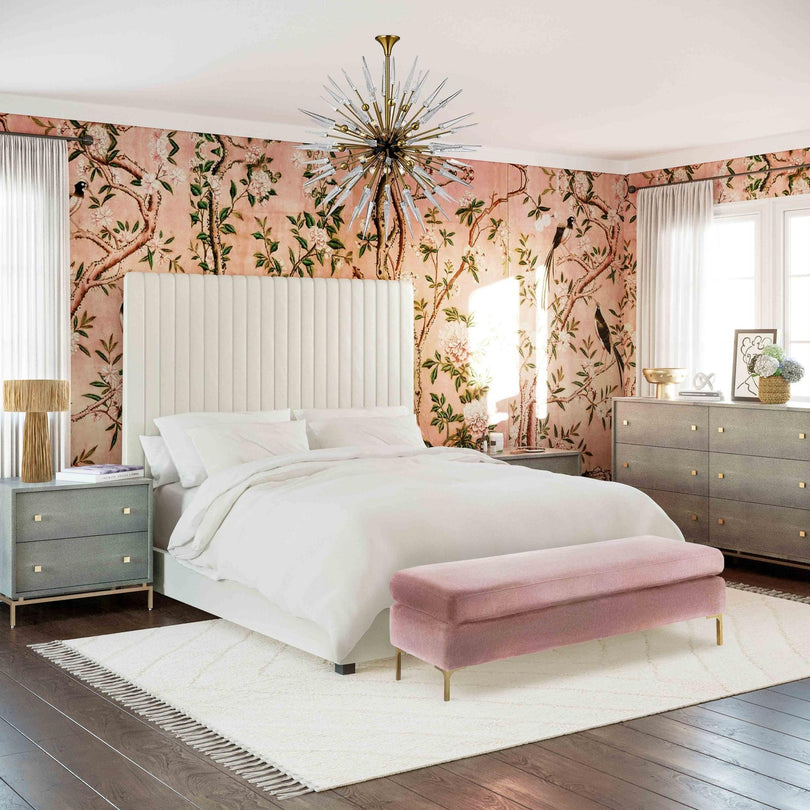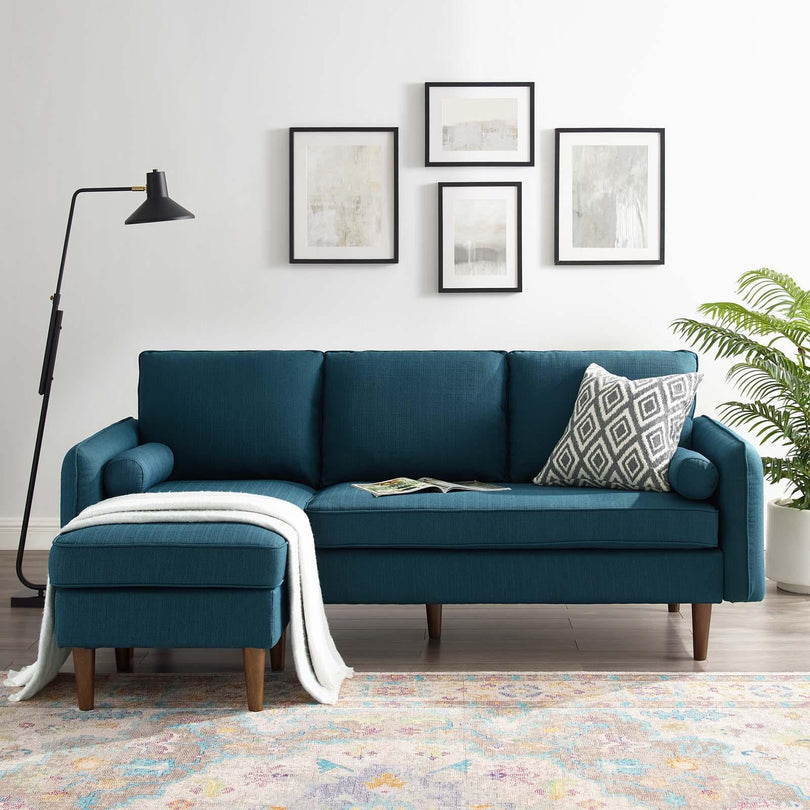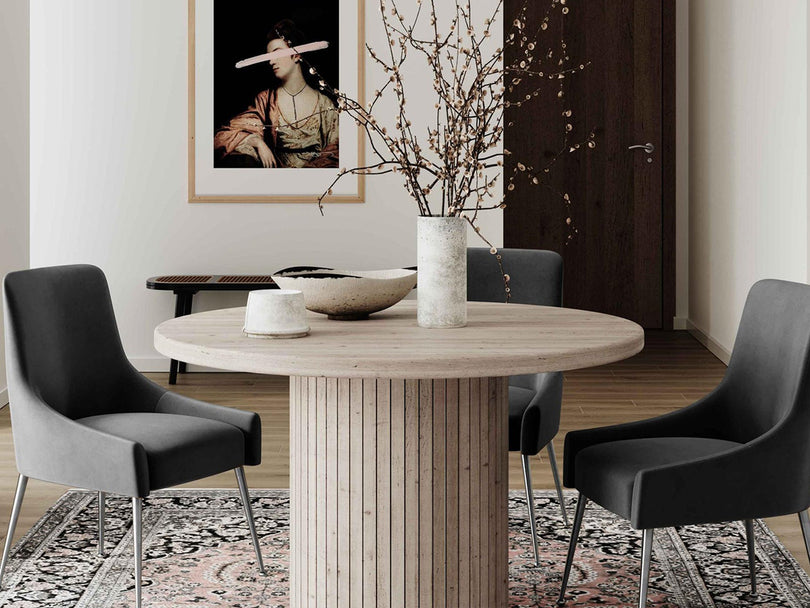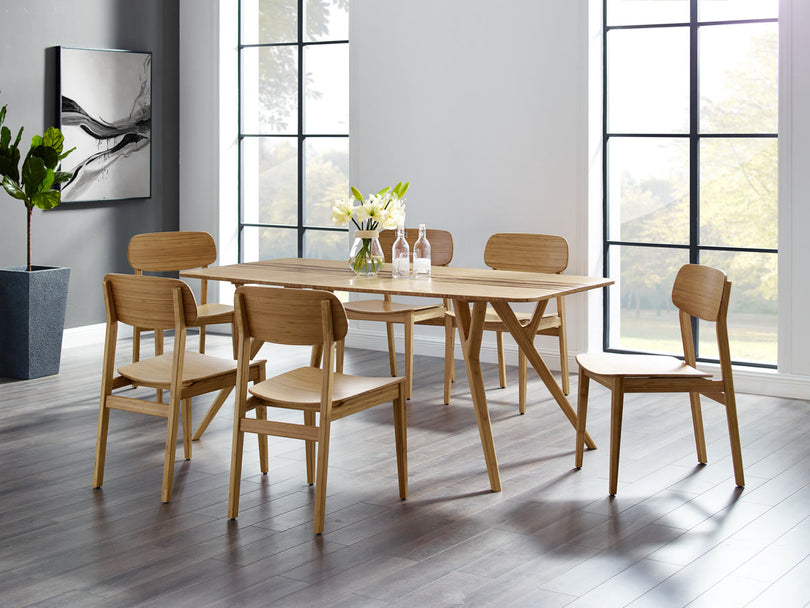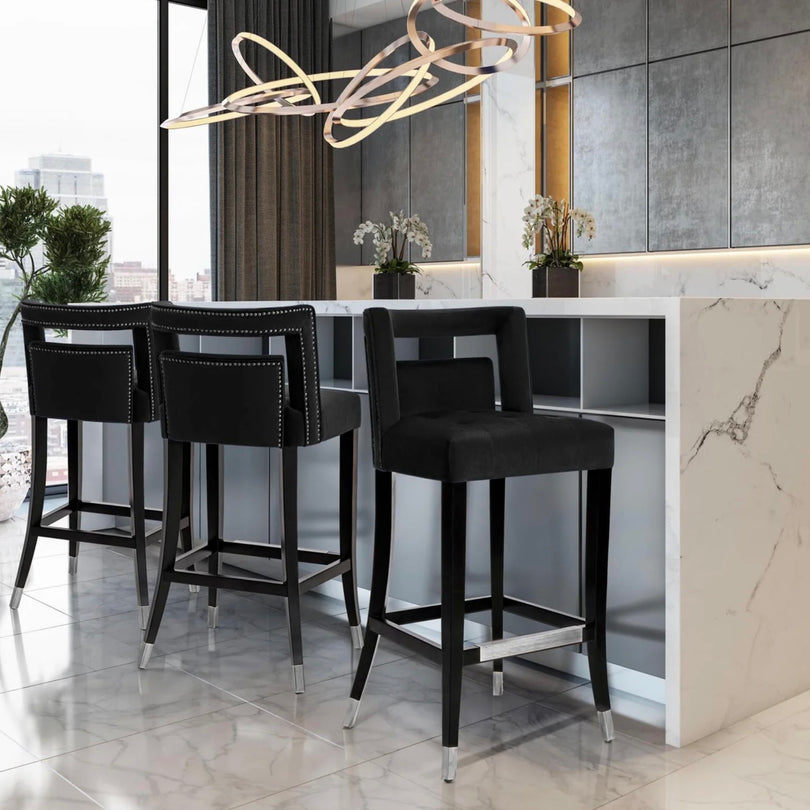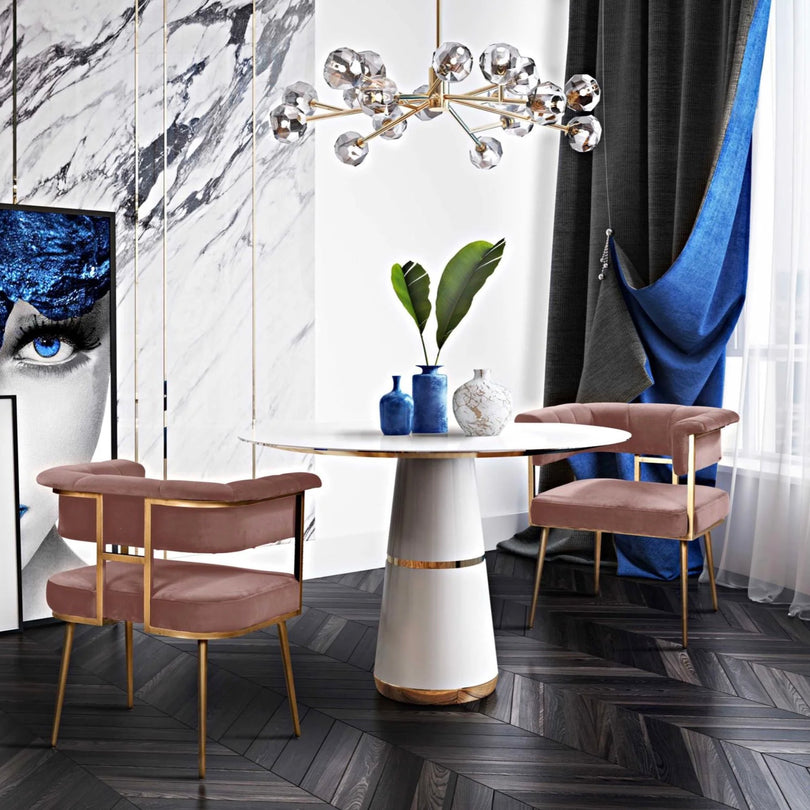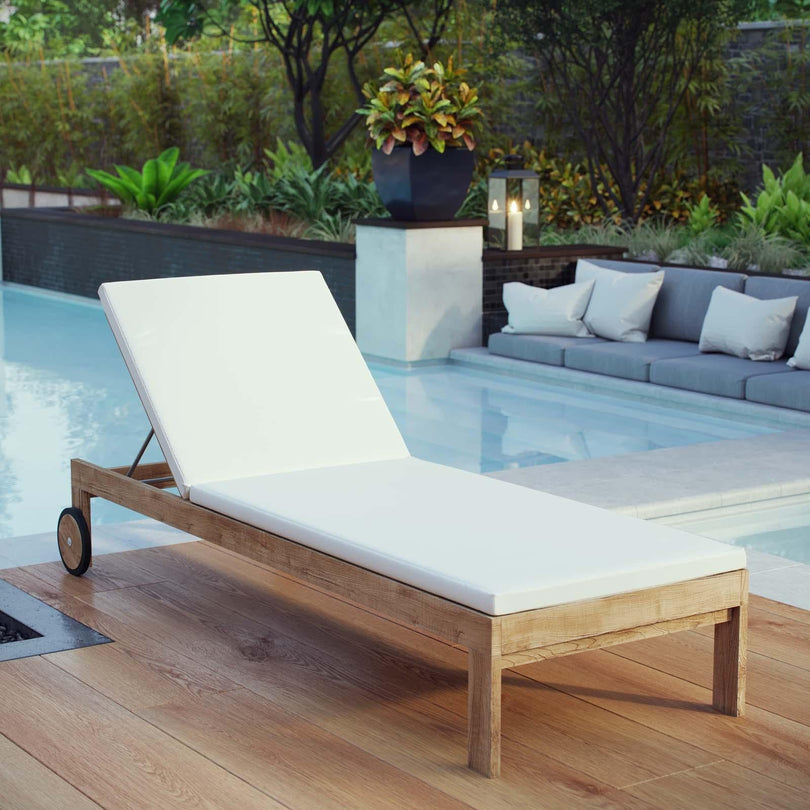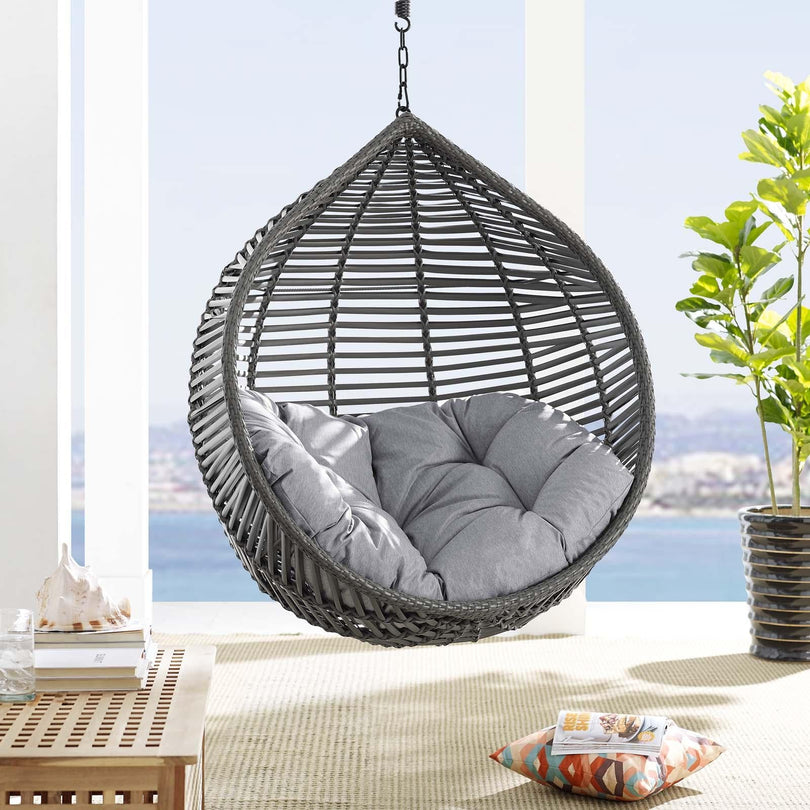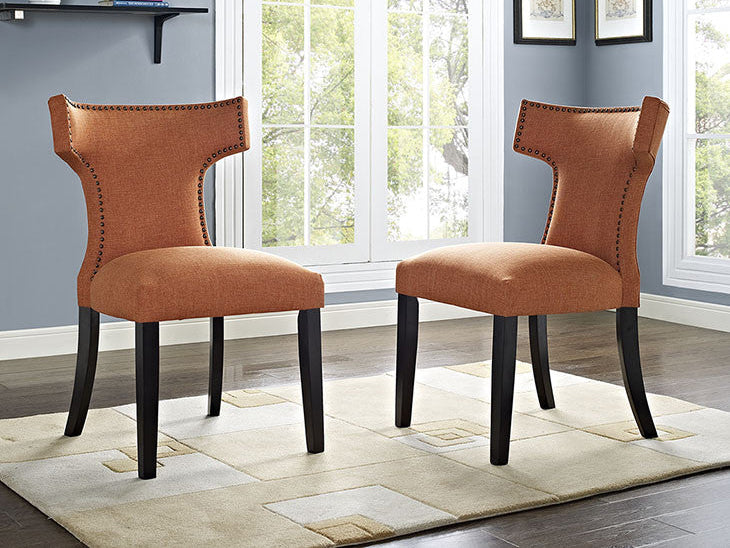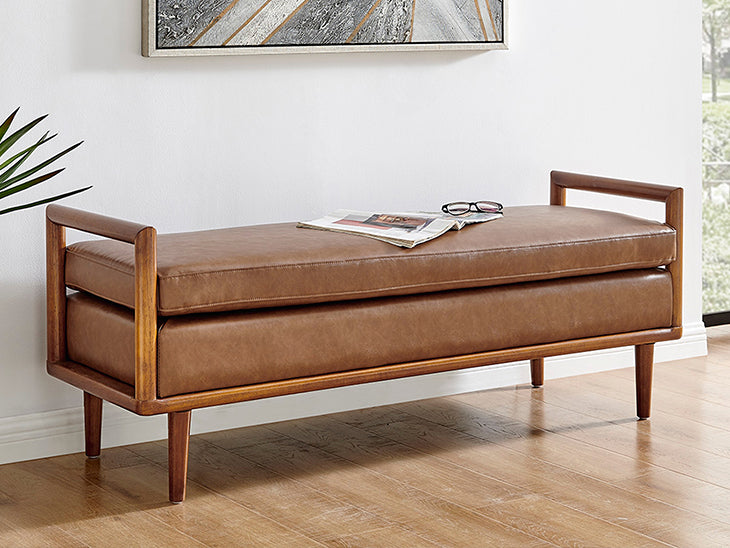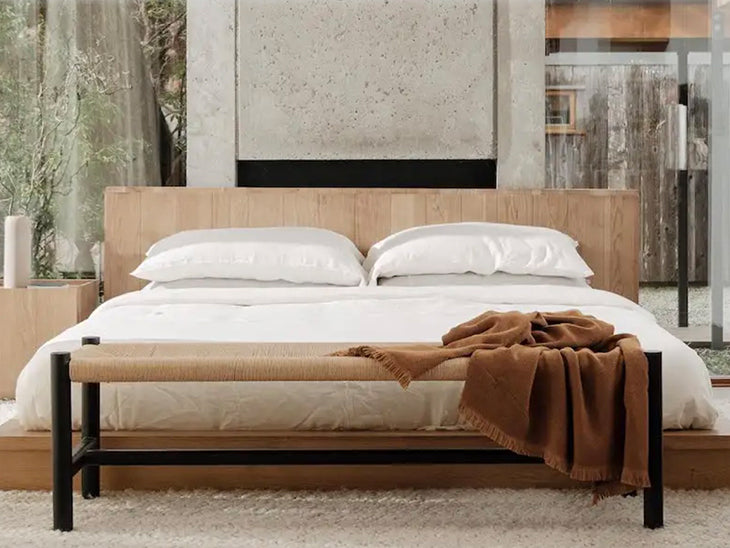Welcome to a refreshing exploration of the future spectacle of interior design: the furniture trends projected for 2024. With spaces becoming increasingly compact, the role of furniture in providing both functionality and beauty has never been more crucial. This shift in architectural landscape and urban living conditions has birthed a fondness for minimalistic designs blending effortlessly into small spaces. Furthermore, the increasing consumer demand for customization is driving market trends and shaping the future of the industry.
In this thought-provoking expose, we will evaluate the current state of the global furniture market, walk you through US market specifics, delve into the custom furniture market potential, and explore value additions to the furniture market. We'll look into the anticipated market projections for 2024 and beyond, detailing market reach and spanning territories. We will also gain insight into how retailers perceive the home furnishings market, analyze the commercial segment's market share, understand the Indian furniture market's potential, and prod into consumer research and shopping habits.
Strap in as we journey into the future, where art meets practicality and innovation refines comfort! Prepare to discover the unfolding panorama of bespoke fashions, trailblazing materials, transformative styles, and the technologies defining furniture trends in 2024.
Global Furniture Market Overview
Welcome to an insightful analysis of the Global Furniture Market. By taking a snapshot of the current standing, we will unlock perceptive insights that reflect our market's strengths, weaknesses, opportunities, and threats. One may consider the global furniture landscape a steadfast giant, continually morphing and growing to accommodate the world's requests.
Market Valuation
Let's begin by understanding the financial extent of our subject matter. A study on global financial market trends reported that the furniture market stood proud with an impressive valuation of $541.52 billion in 2023. Imagine the magnitude of the interactions happening every day to contribute to this substantial amount - from wooden workstations being shipped overseas, to the on-going trend of multipurpose furniture being crafted for contemporary metropolitan apartments and homes.
Projected Growth
What's more astounding is its unstoppable growth. The same report yields that the global furniture market is projected to inflate to an imminent $780.43 billion by 2030, demonstrating a Compound Annual Growth Rate (CAGR) of 5.36% for the period. This projection cements the influence of our furniture market, pointing to unyielding growth, especially noticing the popularity of minimalistic designs, as explained in our blog on Upcoming Furniture Trends in 2024.
While the numbers indeed seem promising, we must not mistake these projections as an excuse to rest on our laurels. To stay ahead, the industry must continue to evolve and innovate designs, and cater effectively to the ever-changing consumer preferences and environmental needs. This information about the realm of global furniture market fortifies its prominent role in worldwide economies and charts a promising roadmap for the years ahead.
US Furniture Market Scenario
The US furniture market, with its diverse range of trends and designs, continues to be a thriving sector, showing promise for both established brands as well as emerging startups. As a bustling industry, it boasts a current valuation of a whopping $244 billion and is projected to grow at a compound annual growth rate (CAGR) of 3.91% over the next five years! These numbers reflect the significant investment and considerable interest the American populace has in transforming their living spaces into cozy and fashionable sanctuaries.
While a plethora of styles have morphed the furniture industry over the years, minimalist design is currently prominent in the industry. From a simple dining room table to a chic bedroom set, incorporating minimalist furniture can elevate any setting, instilling a modern aesthetic, and invigorate the charm of your dwelling environment. A seamless method of brushing up on the latest minimalist design trends is by exploring our efficient guide on Leading Minimalist Furniture Trends which elegantly blends functionality with an understated visual appeal.
Here are some key highlights of the US Furniture Market:
- The US furniture market is currently valued at $244 billion.
- There's an anticipated CAGR of 3.91% over the next five years.
- The demand for minimalist furniture design continues to surge.
The bustling US furniture market offers an exciting promise of growth over the coming years. By staying informed with the latest trends like minimalist design, you can participate in this growth, whether as a consumer or a designer, unlocking a world of aesthetic and economic benefits. How you choose to embrace this opportunity is all up to you!
Potential of the Custom Furniture Market
Imagine owning a dining table set that's a perfect fit to your dining area, or a bookshelf that efficiently uses an oddly-shaped corner of your room. Custom furniture offers an excellent solution to these needs, gracing your house with unique pieces that could become conversation starters at your cosy gatherings. But it's not just about making homes beautiful. Custom furniture has reshaped the industry to reach an unforeseen market potential, projected to hit multimillion figures by 2032.
Homes come in all shapes and sizes, and so do the tastes of their inhabitants, and custom furniture caters to this ever-growing diverse demand. Here's why this particular segment of the furniture market is making big waves:
- Unconventional Spaces Get Utilized: Got a narrow hallway or an awkward little nook? With custom furniture, you'll never waste any space.
- Express Personal Styles: Whether you're a minimalist, a vintage lover, or a fan of Scandinavian design, bespoke furniture allows you to exhibit your tastes with elan.
- Specific Requirements Met: From ergonomically designed desks for the home office to storage-rich bed designs for small apartments, custom furniture can meet all specific needs.
Apart from satisfying individual demands, custom furniture also caters to the earth's needs by reducing waste. Customized pieces are built to fit and last, reducing frequent purchases and the throw-away culture seen with mass-produced items.
As the demand for custom furniture soars, the industry responds with innovative solutions. 3D rendering technologies and automated production lines are revolutionizing the spectrum. Potential buyers can visualize their design through 3D models and make desired alterations in a matter of minutes. This inclusion of technology not only elevates the customer experience but also streamlines production, thereby reducing costs.
By 2032, the custom furniture market's growth trajectory is expected to reach astronomical figures - a testament to this segment's vast potential for homeowners, interior designers, and the whole furniture industry.
A shift in consumer behavior towards preferences for personalization has been a key driving force behind this growth. And given the high levels of satisfaction among those who have already decided to go the custom route, this expansion isn't expected to stop any time soon. The future sure looks beautiful and fitted for the custom furniture market.
Furniture Market Value Addition
The furniture market is continuously evolving, with designers and manufacturers incessantly seeking for novel ways to add more value to each piece. Whether it's the use of sustainable materials to create eco-friendly pieces or integrating smart technology into furniture designs for enhanced functionality and convenience, the industry has witnessed several value-addition trends over the years. The competitive advantage here lies not only in the aesthetics of the furniture pieces themselves, but also in their longevity, practicality, and contribution to boosting the customers' quality of life.
With an industry growth forecast predicting the value addition in furniture market to reach a whopping US$134.70B in 2024, prospering at a compound annual growth rate (CAGR) of 3.35%, this sector is evidently becoming more vibrant and influential than ever. This significant surge can be attributed to various factors including swift urbanization, increased consumer spending, and a notable shift towards minimalistic living.
- Urbanization and Increased Spending: Rapid urban migration globally has escalated the demand for trendy and space-saving furniture options. Similarly, with a rise in disposable incomes across several economies, consumers are willing to splurge more on high-quality pieces that promise durability and style.
- Shift Towards Minimalism: As more people embrace the minimalistic lifestyle, there's a drive towards acquiring furniture pieces that are functional and simple, yet exude timeless elegance.
In this respect, it's worth delving into the Top Minimalist Furniture Essentials to keep an eye on in 2024.
The industry's substantial growth can thus be seen as a direct response to these developing consumer preferences and trends. Furniture makers ought to stay informed about these evolving market dynamics and adapt their strategies accordingly, as they strive to create appealing, innovative pieces that meet customers' needs and add value to their living spaces.
Indeed, the opportunities for value addition in the furniture industry are myriad and ripe for the taking. With the right mix of quality materials, creative designs, and a deep understanding of consumer desires and trends, companies can look forward to a thriving future in the market.
Market Projections: 2024 and Beyond
In this rapidly evolving world, predicting the future of any market can be quite a challenging task. Many variables contribute to the dynamic nature of industries, making futuristic projections a fine art indeed. Given these circumstances, understanding the potential trajectory of the furniture market demands an in-depth analysis. In light of the latest studies, the projections for this market are quite promising.
Market Reach in 2024
Startingly, the furniture market is not just enduring; it's thriving. Irrespective of the global economic fluctuations, this market's resilience remains unshaken. By the year 2024, studies forecast the global furniture market will reach a staggering worth of USD 637.5 billion. This growth underlines the unwavering consumer demand for quality furniture and the industry's ability to meet these needs deftly.
While these numbers are indeed impressive, the real beauty of the furniture market's growth is illuminated when you factor in the evolving consumer trends and preferences. The industry has managed to keep pace, adapting and innovating in response to these shifting sands to sustain this remarkable growth trajectory.
Projected Reach by 2029
But it doesn't end there. There's even more reason for optimism when we peer a little further into the future. With a projected compound annual growth rate (CAGR) of 5.25%, the industry is poised to achieve a market valuation of USD 823.75 billion by 2029.
The predicted growth over the next decade truly highlights the robust and resilient nature of the furniture market. Its capacity to adapt, innovate, and meet consumer needs is fundamental to its success. As an industry, it continues to evolve, leveraging the latest technology and styles, thus ensuring its offering remains highly sought-after by discerning consumers.
When you couple these future growth projections with the industry's past performance, the furniture market’s potential is truly awe-inspiring. Backed by a steadfast consumer base and driven by continuous technological advancements and design innovations, its future certainly looks bright. As we watch and wait, it's clear this is an industry that consistently knows how to rise to the occasion and hold its ground, making it a force to be reckoned with in the global economy.
Retailers' Outlook on Home Furnishings
Step inside the world of retail and discover the optimistic projections about the home furnishings sector. As we gaze into the future, the sentiment among retailers is increasingly positive, and here's why.
A whopping 63% of retailers have an encouraging outlook for 2024, believing that the purchasing of home furnishings will either increase or remain steady. While these are merely projections, they resonate strongly with the current consumer trends, demonstrating an enduring enthusiasm for enhancing the interior aesthetics.
Some retailers believe these favorable conditions are due to a few key factors:
- The steady rise of remote work: As more people work from home, there's been an increased demand for functional yet stylish home office furniture.
- The growth of online shopping: E-commerce has made shopping for home furnishings more convenient and accessible.
- The trend of home improvement: Many consumers are investing in home renovations, leading to more sales of home furnishings.
However, amid this optimistic outlook, retailers should also prepare for forthcoming challenges. This could include fluctuations in supply and demand, increasing competition, changing consumer preferences, and the need to deliver distinct shopping experiences.
One way to navigate these challenges is by staying attuned to the market needs and emerging trends. As the retail landscape evolves, it's crucial to focus on offering value to the customers – this may mean curating an eclectic range of products, providing excellent customer service, or leveraging digital technology for a seamless omnichannel experience.
The projections for the home furnishings industry reflect a positive trend, but they are not a guarantee. They serve as an impetus for retailers to continue innovating, adapting, and thriving in this dynamic environment.
Remember, success in retail isn't just about sustaining sales, but also about creating enjoyable shopping experiences. After all, it's not just a chair or a table that consumers are buying – it's a piece of their home, a symbol of their taste, and an expression of their lifestyle.
So, as we look toward 2024, let's embrace this uplifting outlook, be equipped for the challenges, and work together to create a vibrant home furnishings retail industry that consumers love.
Commercial Segment's Market Share
Note your calendars, dear readers, because we have some impressive statistics to share relating to our topic of interest: the commercial sector. Keen market observers have been closely watching the trends and shifts in this particular segment's market share, and the data has just rolled in for 2024.
The figures are in, and they are noteworthy. The commercial sector held a sizable 45.7% market share in 2024. That's almost half the market, showing an undeniable dominance of the commercial segment. But the story doesn't end there.
Even more exciting is the projected growth rate for this segment. Analysts forecast a robust 5.7% Compound Annual Growth Rate (CAGR) through 2034. That's a whole decade of steady and strong growth!
Here's what this looks like in bullet points to simplify:
- Commercial segment’s market share in 2024: 45.7%
- Expected growth rate: 5.7% CAGR
- Projection period: 2024–2034
Now, let's dive into what specifically is driving this extraordinary growth in the commercial sector. It could be a combination of various factors, including technology advancements, customer demands, market competition, and more.
Indeed, the commercial sector's maturing prominence is not something that has happened overnight. A confluence of factors, each contributing in its own way, has resulted in the commercial segment carving out a significant section of the market for itself.
These numbers provide a clear message: despite facing several challenges, the market is brimming with potential, and the commercial sector is capitalizing on this potential. Its commanding market share and anticipated growth rate speak volumes about the sector's resilience, dynamism, and long-term strategy.
This data serves as a wake-up call for those not yet seized by the promising prospects in the commercial sector. Its strong market share and forecasted growth pave the way for a new era dominated by this dynamic segment. So whether you're a curious observer or a serious investor, it's time to pay close attention to the commercial sector as it continues to shape the market's future landscape.
Indian Furniture Market Potential
As the world shifts towards a more modern and design-centric approach, furniture has taken on a transformative role in our lives. From being mere objects of utility, they have morphed into pieces of art that greatly impact the overall aesthetics of any space. And when we survey the global landscape today, one country that stands out in the furniture market is India. The rich tapestry of diversity exhibited in every corner of this vibrant country makes the Indian furniture market an arena full of potential. Predictions suggest that this market is set to grow at an amazing Compound Annual Growth Rate (CAGR) of around 12.91% between 2020 and 2024.
The Robust Growth Factors
Several factors contribute to the promising escalation of the Indian furniture sector:
- Growing Middle Class: As the middle-class population of India expands, the demand for quality furniture, especially those that fit into contemporary Indian homes, is seeing a steady rise.
- Real Estate Surge: A boom in the real estate industry naturally brings along an increase in furniture sales as more people invest in homes and offices.
- E-commerce Evolution: The online marketplace has revolutionized the way Indians perceive and acquire furniture, opening up varied options for every single taste and pocket.
- Urbanization: The country's rapid urbanization leads to a growing number of modern homes and spaces, calling for furniture that matches the contemporary setting.
- Consumer Shift: Lastly, the shift towards branded furniture from unorganized to organized sector is becoming more evident, giving further boost to the industry.
With a market that's expanding at such an impressive rate, India presents an unmatched opportunity for furniture designers, manufacturers, and sellers worldwide. The growth may have been spurred initially by the increase in real estate and the rise of the internet marketplace. But the future of the furniture industry in India lies in understanding the nuanced tastes of the Indian customer and catering to the demand for high-quality, innovative furniture designs that blend aesthetics with functionality.
The rise of the Indian furniture market provides a compelling narrative of how a country's historical and cultural richness can be used to drive an industry forward. There is, unmistakably, a powerful connection between the traditional and the modern, the local and the global, the stylish and the utilitarian. As this trend accelerates, we can only anticipate further growth and evolution in the Indian furniture market, making it a hotspot for investment and innovation. And remember, the projected growth of 12.91% CAGR from 2020 to 2024 is just the stepping stone into a market ray of opportunities ready to be ideated and executed.
Consumer Research and Shopping Habits
Shifting trends in today's online dominated world has opened new gateways consumers resort to navigate their shopping decisions. It's critical to understand that shopping habits have experienced a drastic shift in recent years. Digitization and the availability of the internet have made it easier for consumers to find specific products, compare prices, and make informed purchase decisions.
Accents on
- Consumer behavior,
- Online product research,
- Informed Purchasing.
Indeed, online research before purchasing has become a staple part of a consumer's shopping journey. This change is clearly apparent in the furniture industry. A recent study found that a staggering 83% of furniture shoppers conduct online research before making a purchase. This shift in consumer behavior is testament to the power and indispensability of the internet in driving purchasing decisions.
Let that sink in for a moment. This means that the overwhelming majority of consumers are no longer walking into a store and buying on a whim. They're now spending time online, comparing different furniture stores' offerings, reading customer reviews, and making their purchase decisions somewhere they are comfortable and without pressure.
This development presents a tremendous opportunity for businesses. Having a strong online presence is no longer an optional extra in marketing considerations—it's a necessity. Brands that are able to leverage their online platforms effectively open up a whole new arena in which to engage their customers, build relationships, and cultivate loyalty.
As we chasten our understanding of consumer shopping habits, here's a look into specific trends:
- Product research: Consumers are not only resorting to the internet for product availability but also to delve deeper into specifics like product information, review analysis, and price comparison.
- Informed purchasing: The ease of access to product information has empowered customers to make informed decisions that offer value. This puts immense pressure on businesses to uphold transparency, authenticity, and competitiveness.
In short, the digitization of consumer research and shopping habits is not just a fleeting trend—it's the new normal. Understanding this is crucial to attracting and retaining customers in today's highly competitive marketplace. Embrace the possibilities, be responsive to change, and remember that, ultimately, the aim should be to provide a customer experience that seamlessly blends both online and offline shopping experiences.
Conclusion
As we draw our exploration of furniture market trends to a close, it's clear that the potential for growth and innovation is massive. The allure of minimalist designs, particularly, is only projected to increase as we head into 2024 and beyond. Today's consumer, whether in the US, India, or any other part of the globe, seeks simplicity, functionality, and elegance in their furniture choices.
And where better to find these than Minimal & Modern, the premier provider of modern, sophisticated furniture. In the dynamic landscape of the global furniture market, we continue to stay ahead of the trend, providing pieces that transform your spaces into havens of contemporary living.
So why wait? Begin your journey towards a minimalist, modern living space today by exploring our curated collection right here. Because at Minimal & Modern, we believe less is more, and simplicity is indeed the ultimate sophistication.
Frequently Asked Questions
-
What are the upcoming furniture trends in 2024 for minimal spaces?
Some upcoming furniture trends in 2024 for minimal spaces include multi-functional and space-saving furniture pieces, minimalist designs with clean lines, natural and sustainable materials, and modular furniture systems.
-
How can multi-functional furniture benefit minimal spaces?
Multi-functional furniture can benefit minimal spaces by maximizing functionality and optimizing the use of limited space. For example, a sofa that can transform into a bed or a coffee table with storage space can save valuable space in a small room.
-
Why are minimalist designs popular for minimal spaces?
Minimalist designs are popular for minimal spaces because they emphasize simplicity, clean lines, and clutter-free aesthetics. These designs create a sense of openness and spaciousness in small areas while maintaining a modern and stylish look.
-
What are some popular natural and sustainable materials used in minimal furniture?
Popular natural and sustainable materials used in minimal furniture include bamboo, recycled wood, cork, rattan, and organic cotton. These materials not only add a touch of eco-friendliness to the furniture but also blend well with minimalist aesthetics.
-
How do modular furniture systems work for minimal spaces?
Modular furniture systems are designed to be versatile and adaptable, making them ideal for minimal spaces. They consist of individual modules that can be arranged and rearranged to fit different needs and spaces, allowing for efficient utilization of limited space.

